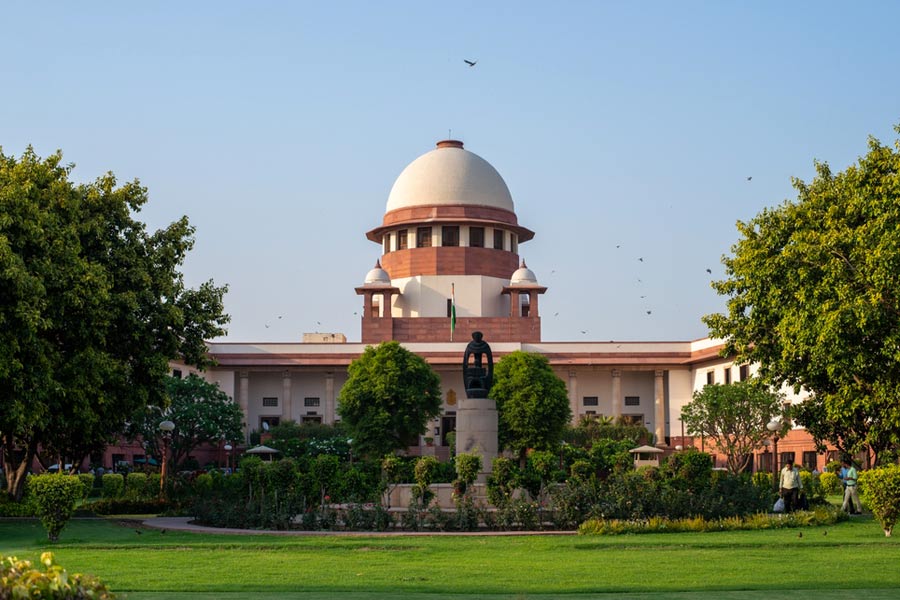The more backward among the Scheduled Castes and Scheduled Tribes can be given preferential reservation in jobs and education by excluding the creamy layer, a constitution bench ruled by a 6:1 majority on Thursday.
Till now, the concept of the creamy layer — marking the withholding of reservation benefits from the economically better off among a disadvantaged community — applied only to the Other Backward Classes.
The seven-judge Supreme Court bench passed the verdict while overruling the 2005 judgment by a five-judge constitution bench in E.V. Chinniah vs State of AP, which held that there cannot be any sub-classification of the SC and ST communities in the context of reservations.
The majority opinion was delivered by Chief Justice of India D.Y. Chandrachud and Justices B.R. Gavai, Vikram Nath, Manoj Misra, Pankaj Mithal and Satish Chandra. The sole woman judge on the bench — Justice Bela M. Trivedi — gave the dissenting verdict upholding the 2005 Chinniah judgment.
Before passing the ruling, the bench considered laws enacted by the states of Punjab, Haryana, Tamil Nadu and Andhra Pradesh to sub-classify their SC and ST communities and leave the creamy layer out of the ambit of reservations.
However, since the 2005 judgment was in force, a three-judge Supreme Court bench had — while expressing doubt on the correctness of the Chinniah judgment — referred the matter for consideration by the present seven-judge bench.
Some of the conclusions of the seven-judge bench, which examined various constitutional provisions and earlier Supreme Court judgments on reservations, are:
⦿ Article 14 of the Constitution allows the sub-classification of a class that is not similarly situated for the purpose of the law.
⦿ The court must determine whether the class is a homogenous, integrated class in relation to the objective of the sub-classification. If not, it can be further classified on the basis of intelligible standards.
⦿ In the Indra Sawhney judgment (the nine-judge ruling in the Mandal case in 1992), the apex court did not limit sub-classification to the OBCs.
⦿ Sub-classification within the Scheduled Castes does not violate Article 341(2) because the castes are not per se included in or excluded from the list.
⦿ Historical and empirical evidence demonstrates that the Scheduled Castes are a socially heterogeneous class. Thus, the State in exercise of its powers under Articles 15(4) and 16(4) can further classify the Scheduled Castes if (a) there is a rational principle for differentiation; and (b) the rational principle has a nexus with the purpose of sub-classification.
On the modalities of the sub-classification, the bench said:
⦿ The objective of any form of affirmative action, including sub-classification, is to provide substantive equality of opportunity for the backward classes. The State can sub-classify if there’s an inadequate representation of certain castes. However, the State must establish that the inadequacy of the representation of a caste or group is the result of its backwardness.
⦿ The State must collect data on the inadequacy of representation in the “services of the State” because this is used as an indicator of backwardness.










